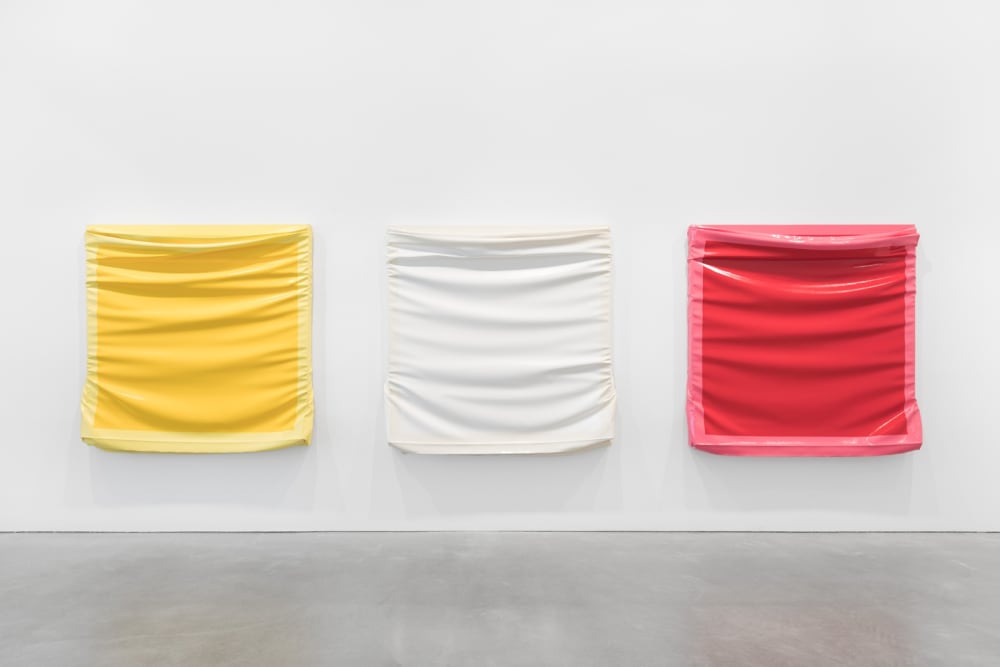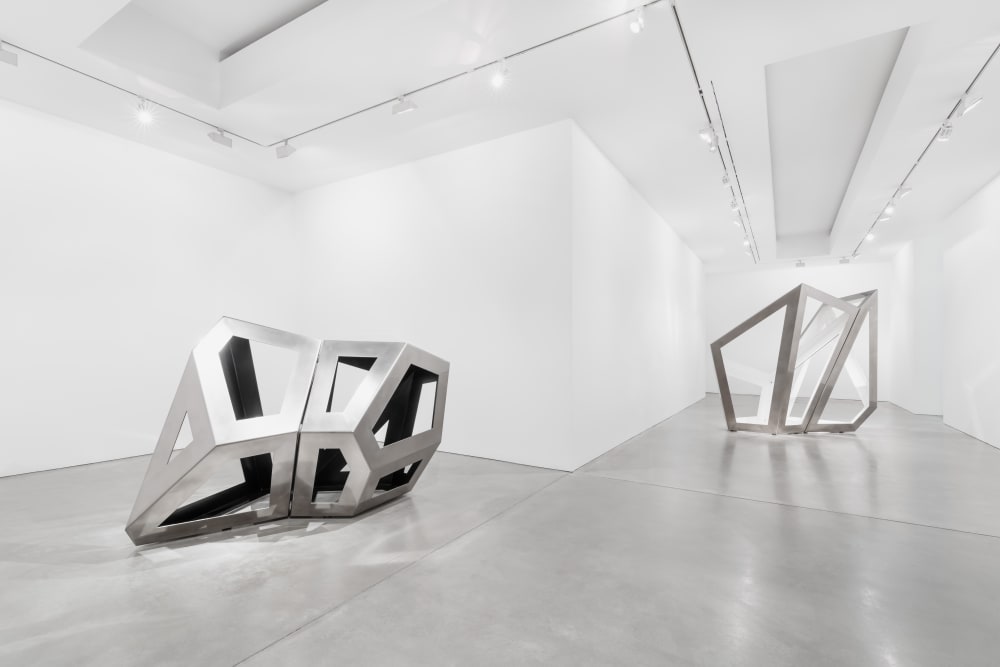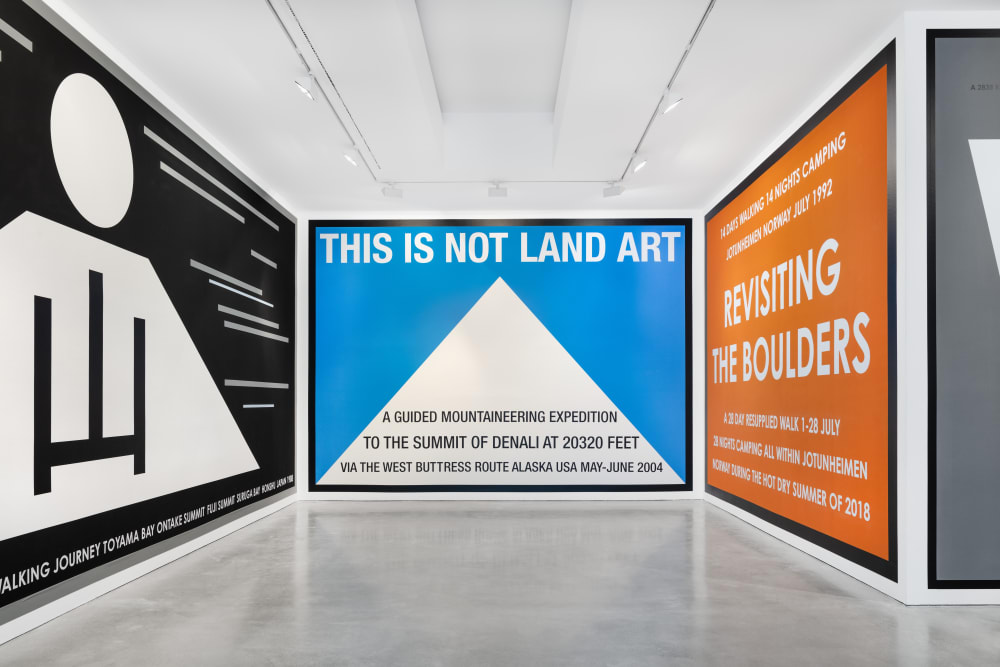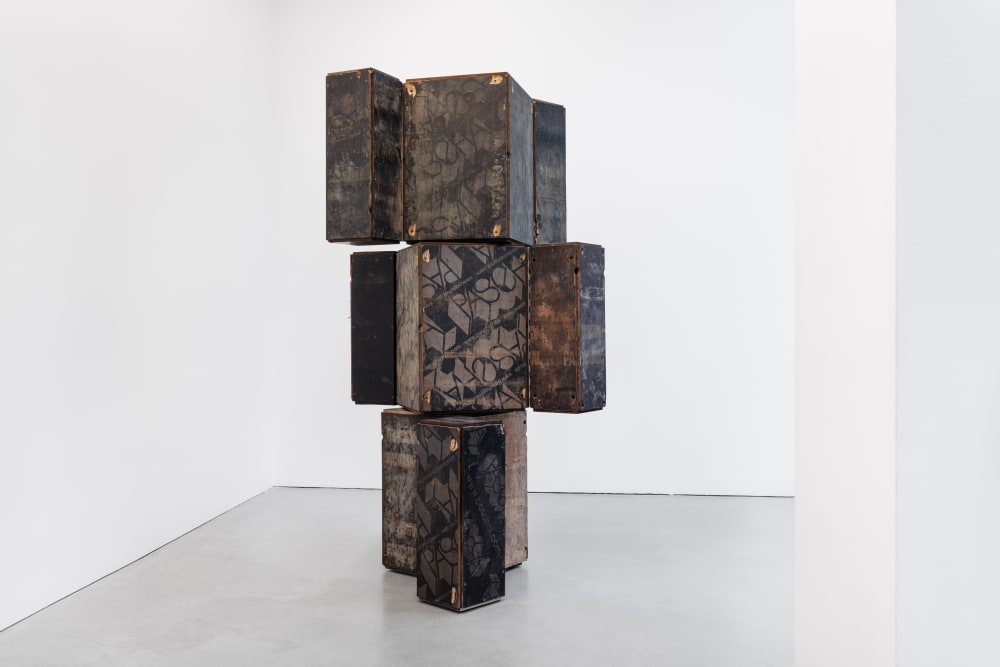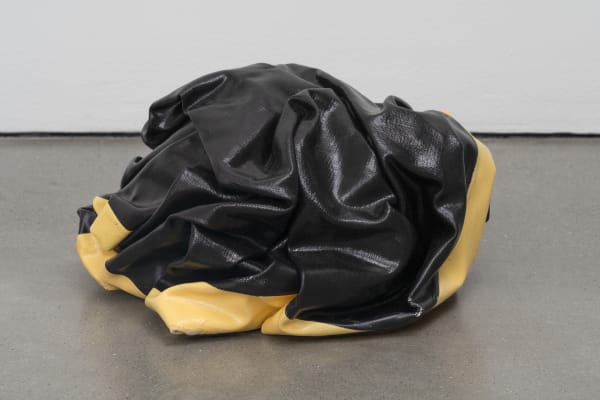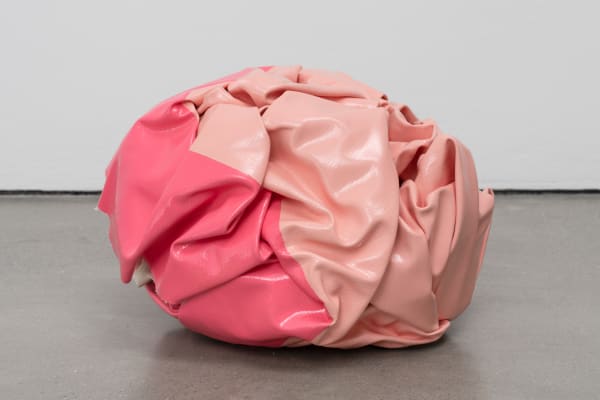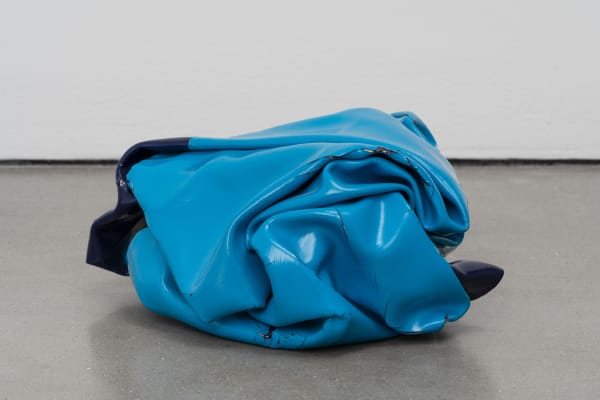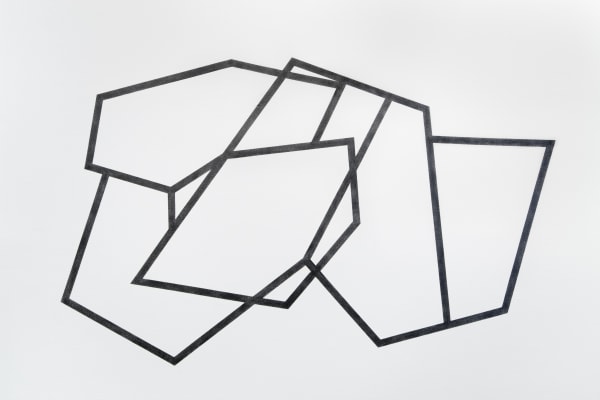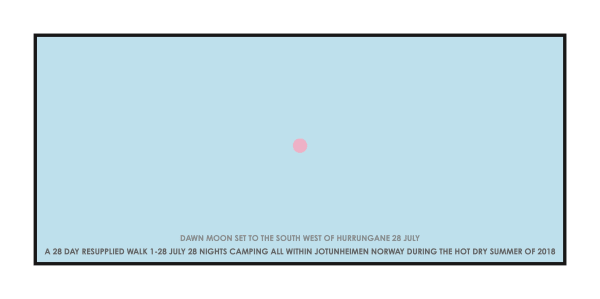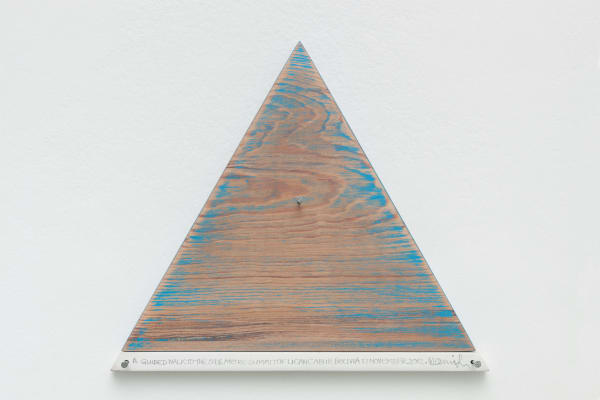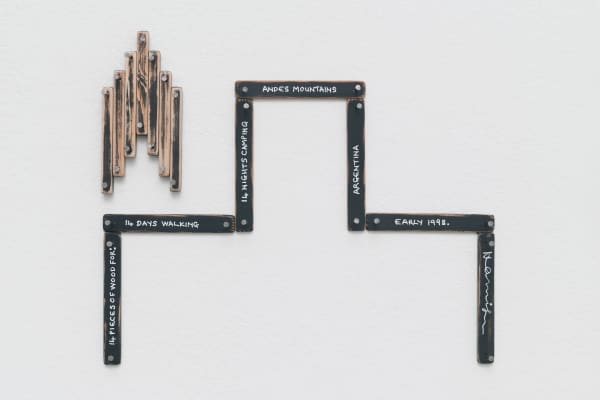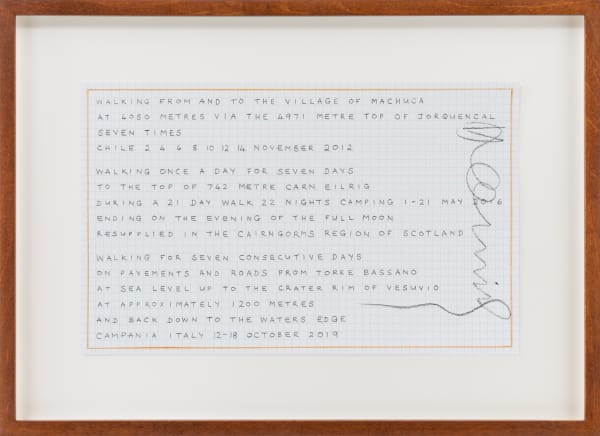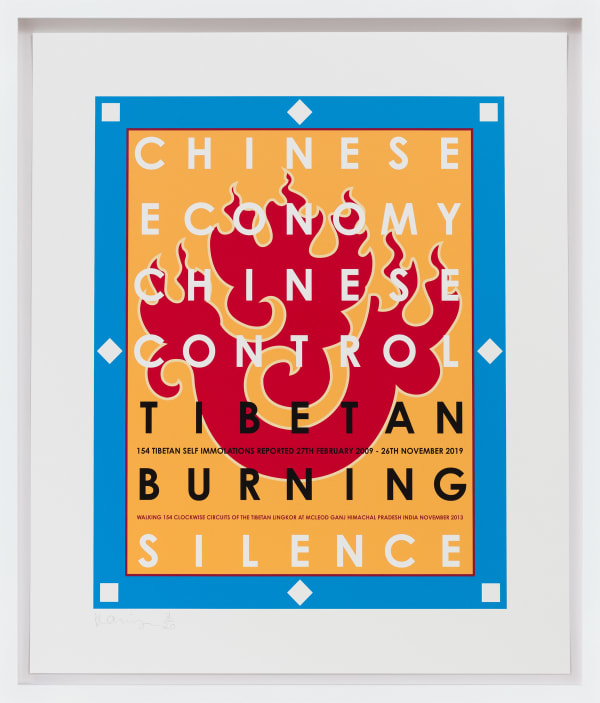FOUR WINDS: Group Show
-
介绍
The group exhibition Four Winds at Galerie Thomas Schulte brings together works by Angela de la Cruz, Franka Hörnschemeyer, Richard Deacon, and Hamish Fulton. Using different mediums and approaches, their works on view explore intangible traces of memories, ephemeral actions, and materials. A vinyl wall text by Hamish Fulton, installed onto the large windowpanes of the Corner Space and visible at a distance from the street complements the artworks inside the gallery.
At the age of 27, Hamish Fulton made the decision “to make art resulting only from the experience of individual walks.” Since then, each of his artworks has derived from direct physical engagement with a particular landscape in a specified space. Wishing to leave as few traces of his passing in nature as possible, Fulton composes texts of carefully chosen words combined with graphically reduced shapes and symbols and translates the experience of his walks into large wall texts or small-scale drawings, photographs, and woodwork.
The wall text—or in this unique case “window text”—titled Free Tibet is applied onto the three large windowpanes of the gallery’s Corner Space. It alludes to the artist’s circumambulation of Ramoche Temple, Jokhang Temple, and Drepung Monastery in Lhasa, a year before the Beijing Olympic Games. Especially Jokhang Temple and the street called Barkhor that surrounds it are a symbolic center of Buddhism as well as of Tibetan protests, which demonstrates that, for Fulton, walking is a connecting experience for a wide range of concerns: “Slow transport, health, meditation, protest, escape, pilgrimage, ritual, dance, art...”
Also capturing memories of movement and exploration, the two wall drawings from the series Bamako Twins by Richard Deacon were inspired by strolls around Mali’s capital. Whilst trying to navigate the city on his walks, Deacon started building mental maps using city monuments as key points. These mental maps guide the shape of the complex polygons of the drawings. They are “twinned” by overlapping two or more drawings. Despite the two-dimensionality of the medium, these drawings have striking affinities with Deacon’s skeletal framework sculptures. This series of steel sculptures he has been working on since 2008 epitomizes the idea fundamental to his art, that sculpture is not only defined by volume but rather by void.
Reverberating questions around fluctuations between surfaces and interspaces, Franka Hörnschemeyer defines “sculpture as the exploration of unexpected relationships between materials” whilst looking at all living beings, including herself, as a form of material. In her works, she often uses construction materials and modular systems to create spatial structures that explore the processual and correlational nature of space. While doing so, she considers matter equal to space, abstaining from treating them differently in any way. Installed on the wall of the gallery are three of her sculptures that comprise moveable aluminum panels attached to one another with hinges. The technically precise constructions capture the momentary relationship between matter and space and facilitate surface reflections as well as the oscillation of the shadows cast by the objects as well as by the visitors.
Scattered around the gallery are several colorful, crumpled-up canvases, which, on closer inspection, become identifiable as discarded paintings—Mini Nothings by Angela de La Cruz. De la Cruz typically uses painting in a way that does not comply with standard pictorial practices, deconstructing its components and treating them like sculptural objects. The squashed canvases take on anthropomorphic features as they pulsate from the silent tension left behind by the vigorous action that they are remnants of.
One of the recycled canvases is placed under a chair. Its title Nothing Under a Chair refers to Bruce Nauman’s work A Cast of the Space Under My Chair from 1965-68, which Nauman made by casting the underside of a chair in cement. Referencing a work that looks at how negative spaces can be given shape exemplifies Angela de la Cruz’s profound fascination with traces of a previous presence—something that all four artists in the exhibition Four Winds share. -
安装图示
-
Inquire about works in Four Winds

-
参展艺术家
-
作品



